SUBSCRIBE TO MY FREE ESSENTIAL OILS NEWSLETTER, "THE ESSENTIAL OILS Rx"
Are Essential Oils Bad for Cats?
I doubt that there is any topic involving the use of essential oils that has generated more fear – and misinformation – than using essential oils with cats. But are essential oils really bad for cats?
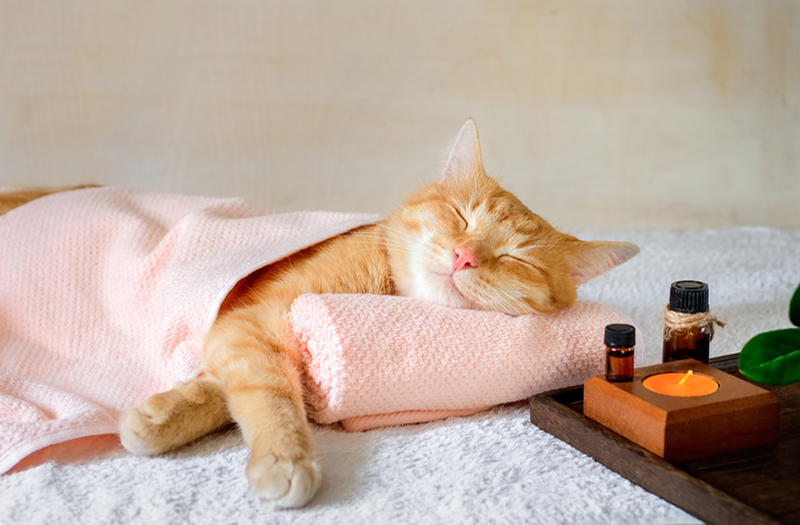
Silky's Story
Despite the fear mongering regarding the use of essential oils in cats the truth is that, when properly used, essential oils are not only safe for cats but can actually be very beneficial for them.
In a recent email, Janice Roark DVM who calls herself "the essential oils vet", tells the story of Silky, an 18-year-old kitty suffering from kidney disease. By the time her owner discovered Dr. Roark, Silky’s kidney disease had become so severe that her owner had to give her intravenous fluids every other night!
Then, following the doctor’s instructions, Silky’s owner diluted a couple of essential oils and put just one drop of the mixture on Silky’s hips each day.
The result?
Silky's kidneys not only improved but actually began functioning normally - for the first time in two years!
Toxins and Cats

As Silky's story illustrates, essential oils can be very good for cats! But there are a few precautions and guidelines that need to be followed.
Cats lack a certain detoxifying enzyme in their liver. This makes them susceptible to toxicity from a number of different things - including some essential oils. (1)
So, there are a few precautions you need to observe when using essential oils with your kitty.
Use Only High-Quality, Unadulterated Essential Oils
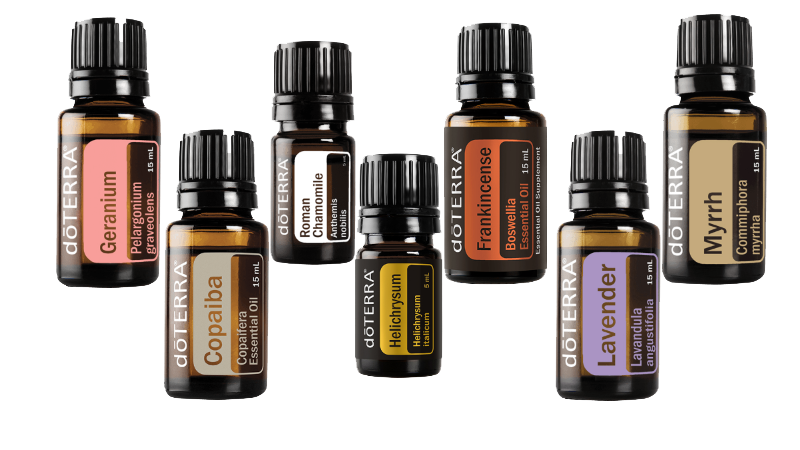
The first thing you want to do is make sure you are using only high quality, unadulterated oils. The company you choose is critically important here because an estimated 80% of the essential oils on the market today are adulterated - including some from major essential oil companies.
In addition, the quality of an essential oil is affected by a number of growing conditions including temperature, soil conditions, altitude and rainfall. So sourcing is very important. And, of course, you want to be certain that no pesticides, heavy metals, pathogenic bacteria or other contaminants are present in the oils you use with your pet - so testing is also critically important.
doTERRA adheres to the strictest standards when it comes to sourcing and conducts extensive testing on their oils to ensure that no adulteration has occurred and that the oils you purchase for them are the highest quality possible.
This is the company that I use and recommend for my human patients and it’s the one Dr. Roark uses and recommends for her animal patients as well. For more on this please see my articles on essential oil quality ,and sourcing and testing essential oils.
There are also a few essential oils that you want to avoid using with your kitty or want to use with caution. This is somewhat dependent on the way you use the essential oil, so let's take a look at this first.
How to Use Essential Oils with Your Cat
Essential oils can be diffused, applied topically or given internally. Let’s take a quick look at each of these methods and how to use them with your cat.
Diffusing Essential Oils With Cats
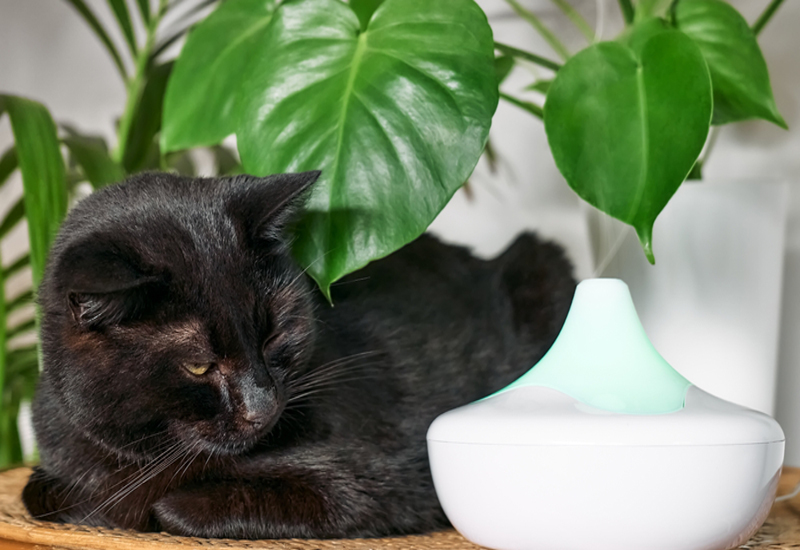
Diffusion is the safest way to use essential oils - and Dr. Roark readily admits that she “diffuses everything!” However there still are a few precautions to be aware of.
1. Use a water diffuser. That is, a diffuser in which the essential oil is added to water and then diffused into the air along with moisture - on an intermittent setting. Add no more than 3-4 drops of essential oil - or 4 to 6 drops total if using a “recipe” of different essential oils - to the diffuser.
2. Be sure to properly place your diffuser. Be sure to place your diffuser in a spot where your pet won’t knock it over.
3. Ensure that your cat is able to leave the room. Be sure your cat can leave the room if the essential oil being diffused is one he or she doesn’t like.
4. Watch your cat for any signs of discomfort. If you notice them, stop the diffuser and get your pet some fresh air.
5. Avoid the use of certain oils. Be very cautious - or simply avoid - diffusing Tea Tree, Cassia, Cinnamon, Oregano, Thyme, Peppermint, Spearmint, Birch, or Wintergreen oils around your cat.
Topical Use of Essential Oils With Cats
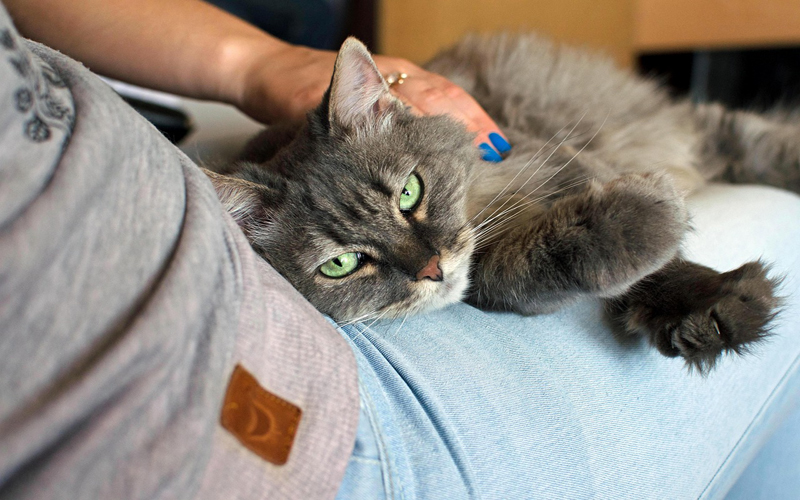
You can apply certain essential oils to your cat topically but you want to avoid using those with phenols, eugenols and d-limonene. These include the Citrus oils (Lemon, Lime, Grapefruit, Orange, Tangerine and Bergamot), Birch, Melaleuca (tea tree), Peppermint, Spearmint and Wintergreen oil.
Other CPTG oils can be used topically but they should be diluted prior to application.
Dr Roark recommends using a .25% to a maximum 2% dilution. She also recommends applying them intermittently rather than on a daily basis. To see how to dilute essential oils to achieve a specific concentration see my page on how to dilute essential oils.
To apply an essential oil to your cat, rub the appropriately diluted oil or oils between your palms and then simply pet your cat along it’s spine. Remember, cats are meticulous groomers so anything you apply topically to a cat may end up being taken internally.
More frequent application of a smaller amount of a more dilute concentration is preferable to using a less frequent application of a larger amount or higher concentration.
Avoid Topical Use of These Oils With Your Cat
With cats you want to avoid topical use of Citrus oils (Lemon, Lime, Grapefruit, Orange, Tangerine and Bergamot), Birch, Melaleuca (tea tree), Peppermint, Spearmint and Wintergreen oil.
You also want to be sure to dilute all essential oils before using it on your cat using a 0.25 to a maximum 2.0 dilution. For instructions on how to dilute essential oils to achieve a particular concentration see my page on how to dilute essential oils.
Oral Administration of Essential Oils with Cats
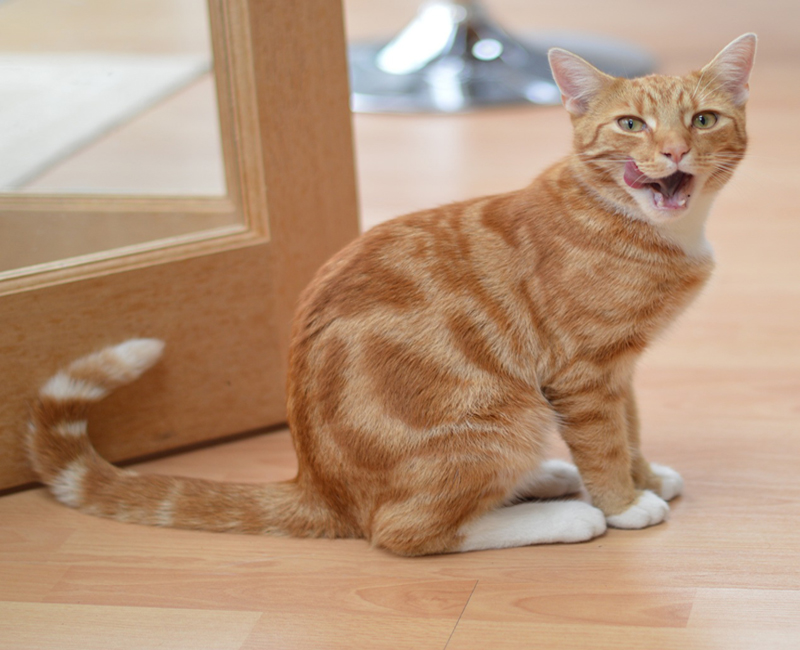
Although some doTERRA oils can be used internally with cats, it's best to do this only with the help of an experienced vet. To administer an essential oil orally to a cat, you can add a drop or toothpick drop to your cat's wet food or a treat. But cats, as we all know, can be finicky about their food so be sure to discuss this with your vet.
Special Considerations
Cats with seizure or bleeding disorders require special precautions.
- Some essential oils may lower the seizure threshold in cats so you want to avoid Basil, Black pepper, Camphor, Eucalyptus, Fennel, Hyssop, Sage, Rosemary and Wintergreen with these animals
- For cats with a bleeding disorder, including those who have difficulty with blood clotting, or are being treated with an anti-coagulant– avoid topical application of Birch, Cassia, Cinnamon, Clove, Fennel, Oregano and Wintergreen.
For More Information
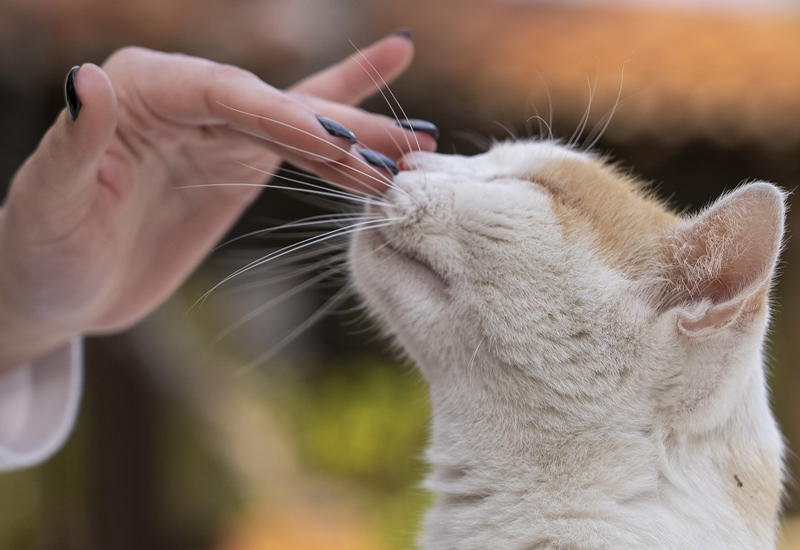
You can find more information on safely using essential oils with cats (and other pets) by downloading Dr. Roark's free safety guide from her website at www.essentialoilvet.com.
You can also find a number of recipes for treating various conditions in cats in the book, "SpOIL Your Pets, A Practical Guide to Using Essential Oils in Dogs and Cats" by Mia Frezzo DVM.
(1) Other things that are toxic for cats include non-steroidal anti-inflammatories (NSAIDS) such as ibuprofen and aspirin, chocolate, caffeine, and pesticides.
What's Next?
This is the last article in series on Essential Oil Safety. If you missed an article, click on the "Safety" button on the navigation bar at the top of this page.

Essential Oil Quality: One of the most important safety tips for using essential oils on yourself, your children or your pets is to be sure you are using only the highest quality essential oils. To learn more about essential oil Quality see my page: Are all essential oils the same quality.

Want to try doTERRA essential oils or essential oil products?
Click on this link to get a FREE membership and WHOLESALE prices for a full year! Get My Free doTERRA Membership.





